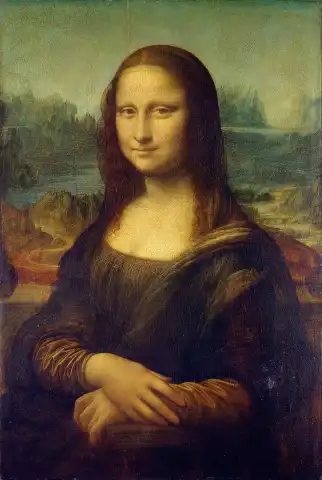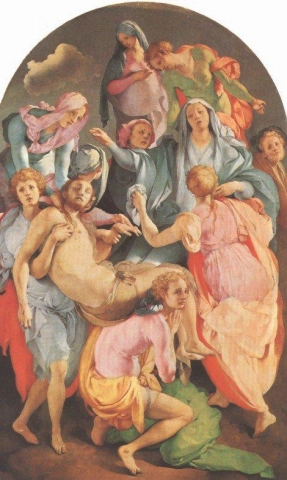Hand-painted painting reproductions - Movements - Mannerism
Imagine owning a museum-worthy piece of art, created by the greatest artists in history and reproduced by passionate and experienced painters. At POD, we offer you the opportunity to make that dream a reality. We reproduce the works of art of your favorite painters from the Mannerism art movement in the smallest details, so that you can enjoy them in your own home.
Our reproductions are made by experienced artists who use the best materials and techniques. We are committed to providing you with works of art of the highest quality, which will bring joy and inspiration to your family for generations to come.
Mannerism: The Elegance of Complexity and Refined Style
Mannerism is a distinctive and sophisticated art movement that emerged in the late Renaissance during the 16th century. Characterized by its elongated forms, exaggerated poses, and intricate compositions, Mannerism represents a departure from the harmonious ideals of the High Renaissance, embracing instead a more artificial and intellectual approach to art. This movement appeals to those with a refined taste for elegance, complexity, and the unconventional, making it a perfect choice for collectors and enthusiasts who value art that challenges traditional norms and stimulates the mind.
Early Origins and Historical Context
Mannerism originated in Italy around the 1520s, following the height of the High Renaissance. The movement emerged as artists began to move away from the balanced proportions, naturalism, and clarity of Renaissance masters like Leonardo da Vinci, Michelangelo, and Raphael. Instead, Mannerist artists sought to explore new forms of expression, emphasizing elegance, sophistication, and intellectual complexity.
The term "Mannerism" derives from the Italian word maniera, meaning "style" or "manner," reflecting the movement’s focus on artistic virtuosity and individual expression. Key figures in the Mannerist movement include Jacopo Pontormo, Rosso Fiorentino, Parmigianino, and El Greco, whose works exemplify the movement’s distinctive style and themes.
Artistic Development and Style
Mannerism is characterized by its artificiality, complexity, and emphasis on style over naturalism. The movement encompasses a wide range of mediums, including painting, sculpture, and architecture, all united by a commitment to elegance and intellectual sophistication.
Key elements of Mannerism include:
-
Elongated Forms: Mannerist figures are often depicted with elongated limbs and exaggerated proportions, creating a sense of elegance and grace.
-
Complex Compositions: Mannerist works are known for their intricate and often crowded compositions, with figures arranged in dynamic and sometimes unnatural poses.
-
Vivid Colors and Lighting: Artists use bold, sometimes unnatural colors and dramatic lighting to create a sense of tension and emotional intensity.
-
Intellectual and Symbolic Content: Mannerist works often contain complex allegories and symbolic references, inviting viewers to engage with the intellectual and emotional depth of the artwork.
Themes and Significance
Mannerism explores the tension between naturalism and artificiality, celebrating the elegance and complexity of artistic expression. The movement’s emphasis on style, sophistication, and intellectual depth has made it a favorite among those who value art that challenges conventions and stimulates the mind.
Key themes in Mannerism include:
-
Elegance and Refinement: Mannerist works are characterized by their elegance and sophistication, reflecting the movement’s focus on artistic virtuosity.
-
Emotional Intensity: Mannerist artists often explore themes of emotion and psychological complexity, creating works that are both visually and emotionally engaging.
-
Intellectual and Symbolic Content: Many Mannerist works contain complex allegories and symbolic references, inviting viewers to engage with the intellectual and emotional depth of the artwork.
-
The Tension Between Naturalism and Artificiality: Mannerism represents a departure from the naturalism of the High Renaissance, embracing instead a more artificial and intellectual approach to art.
Achievements and Influence
Mannerism has had a profound impact on the art world, influencing movements such as Baroque, Rococo, and Modern Art. The movement’s emphasis on elegance, complexity, and intellectual depth has inspired generations of artists and thinkers.
Notable Mannerist Artists include:
-
Jacopo Pontormo: Known for his emotionally charged and complex compositions, such as The Deposition from the Cross and Visitation.
-
Rosso Fiorentino: Celebrated for his bold colors and dramatic compositions, such as Moses Defending the Daughters of Jethro and The Descent from the Cross.
-
Parmigianino: Famous for his elegant and refined works, such as Madonna with the Long Neck and Self-Portrait in a Convex Mirror.
-
El Greco: A master of emotional intensity and elongated forms, known for works like The Burial of the Count of Orgaz and View of Toledo.
Legacy
Mannerism continues to captivate audiences today, offering a timeless exploration of elegance, complexity, and intellectual depth. The movement’s emphasis on style, sophistication, and the tension between naturalism and artificiality ensures its enduring appeal, particularly among those who value art that challenges conventions and stimulates the mind.
Today, Mannerist works are celebrated in museums and private collections around the world, where they serve as a testament to the power of creativity to evoke elegance and intellectual engagement. From the emotionally charged compositions of Jacopo Pontormo to the refined elegance of Parmigianino, these works offer a window into the soul of a movement that redefined artistic expression.
Where to Find Reproductions of Mannerist Art
For those who wish to bring the elegance and complexity of Mannerism into their homes, POD (Painting On Demand) offers a curated selection of high-quality reproductions. These artworks capture the essence of Mannerism, from the emotionally intense works of El Greco to the refined elegance of Parmigianino, providing an authentic artistic experience for discerning collectors. Whether you’re drawn to the intellectual or the elegant, Mannerism offers a timeless connection to the sophistication of artistic expression.





